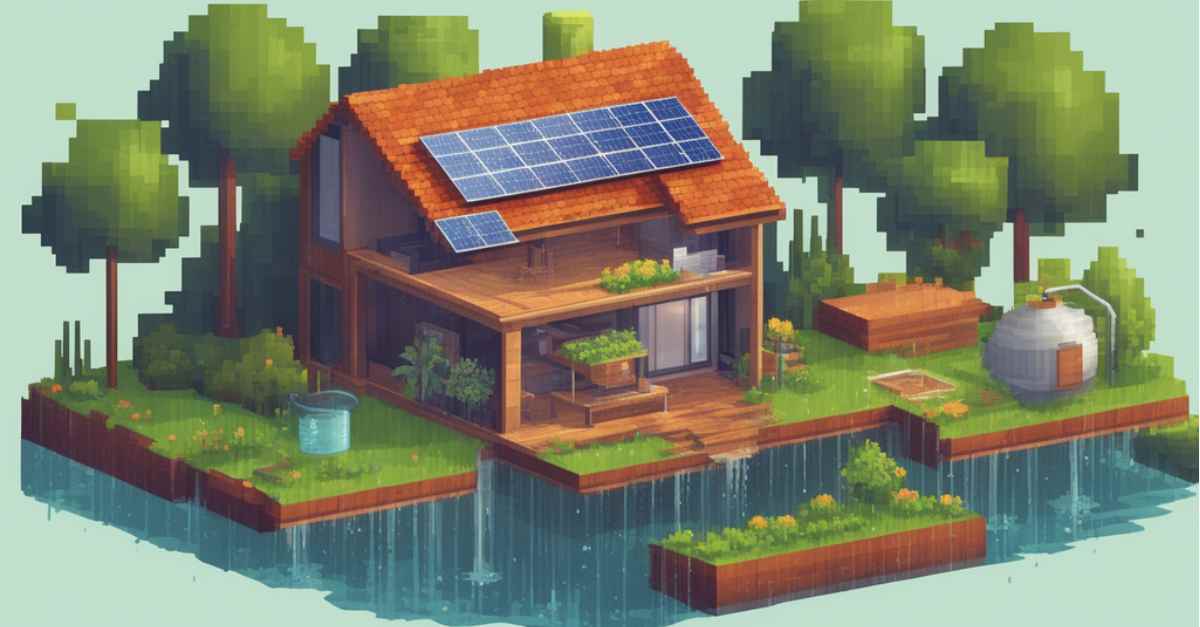How to make a house eco-friendly
Turning your home into an eco-friendly one requires you to make gradual changes that result in a reduced environmental impact, lower energy bills, better comfort and a higher property valuation.

Saakshi Gupta
Oct 20, 2023

13% of Australia’s greenhouse gas emissions are produced by our homes. The growing population will require new house constructions that will burden the planet further.
By 2030, with rapid adoption turning a standard home into an eco-friendly home could save Australians $600 million on energy bills.
In this article, I’ll do a deep dive into eco-friendly homes, their common features, how you can start your journey towards creating one, and the personal benefits you’ll reap after implementing eco-friendly practices. The list of eco-friendly practices you can undertake includes:
Switching to LED bulbs to reduce electricity consumption
Using smart power strips that cut off power to devices on standby
Insulating your house with better eco-friendly materials like cotton
Air sealing your home to decrease the loss of heat through gaps and cracks
Patching up water leaks
Using electrical devices for at least seven years to reduce e-waste
Installing a solar PV system to generate clean solar energy
Switching to smart heating and cooling solutions that can follow your schedule
So, if you’ve ever wondered how you can make your house green, this article will help get you started as you tackle new projects around the house this season and beyond.
What does an eco-friendly home look like?
An eco-friendly home is one that is built with the environment and sustainability in mind. An eco-friendly home might incorporate features like insulation, shading and glazing that take advantage of the natural heating and cooling sources, correct orientation, and thermal mass.
These features tend to be suited to the climate to ensure that the home is comfortable all year round. As technology evolves, so do construction methods, which means that the concept of an eco-friendly home is constantly developing.
Usually, eco-friendly houses are fitted with energy-efficient products and environmentally durable materials that offer a lifetime of benefits, such as lower energy bills and maintenance costs.
There are a few features that are common in eco-friendly homes, with some listed below:
Renewable energy
Did you know that the average house in Australia emits around 2.8 tonnes of carbon a year? That's an extra 1.7 cars on the road each year.
Eco-friendly homes usually have renewable energy sources like solar panels and sometimes even battery storage. Converting the sun’s energy into electricity using a solar system produces zero greenhouse gas emissions. Excess electricity can either be stored in a battery as backup or be directed back into the grid in exchange for credits called feed-in tariffs.
Good insulation
Eco-friendly homes tend to have good insulation as it reduces the need to turn the heating on, resulting in saving energy, money, and lowering your carbon emissions. This means that your home stays warm in winter and cool in summer.
Water conservation systems
Water heating and consumption are regulated with equipment like low-flow toilets, water-efficient taps, and energy-saving hot water heaters, leading to lower bills. Some homes might also have features that allow you to collect and use rainwater.
Use of natural materials
Natural materials are used in an eco-friendly home over plastic sources. Some might even opt for reclaimed wood to minimise deforestation and avoid the need to source new materials.
Smart technology
Homes fitted with smart technology, such as smart lighting and thermostats, have more control over when and how energy is used.
13 ways to make your house more eco-friendly
Everything so far sounds great, but it also looks like a lot of effort, right?
You might wonder if you need to start from scratch to have an eco-friendly home. In short, no, that’s not the case. Turning your home into an eco-friendly one is just a matter of making one simple change at a time.
1. Replace fluorescent light bulbs with LED bulbs
LED light bulbs save up to 90% of your energy, reducing your electricity consumption and will last longer.
2. Use energy-conserving smart power strips
Different electronics require different amounts of power. Electronics like modems and routers require a steady flow of power, while others like printers and video game consoles only require energy when in use.
Even when an electronic is on standby, if it’s plugged into a traditional power strip, it’s still consuming energy — known as ‘phantom loads’. But you don’t want to keep plugging and unplugging devices either. So, a solution like a smart power strip that detects when a device is on standby and cuts off power is the way to save energy.
3. Insulate your house
Insulating the walls of your home prevents leaks of warm air during winter. Avoid harmful and non-renewable materials like fibreglass or mineral wool. Instead, go for cotton as it can be fabricated into thick batts for your walls.
4. Use air sealing
Air sealing prevents excess air movement from inside to outside your home. Draughts, an issue in South Australia, can add up to 20% to energy bills. Air sealing will decrease air loss through gaps and cracks, save you energy and reduce your heating costs, especially if you live in colder regions. When you seal your home, you also add an extra layer of insulation upgrade, which makes temperature easier to regulate for both cooling and heating.
5. Patch up water leaks
Check every water tap, hose, or shower cap in your house. You might even find evidence of a leak under your cabinets. A quick audit of all water sources throughout the home and fixing the leaks will help preserve your belongings from mould and water damage while reducing unnecessary water use.
6. Use electrical products for at least seven years
E-waste, or electronic waste, contains harmful toxins such as mercury, beryllium, lead, and arsenic. Some parts, such as copper, steel, and iron glass, can be recovered and made into new items.
Therefore, they must be disposed of properly and not thrown into the trash! To help reduce e-waste, keep electrical products to last at least seven years or donate them when you’re no longer using them.
7. Try solar
Installing a solar system might seem like a significant initial investment, but it will accelerate the creation of an eco-friendly home. Rooftop solar panels source clean energy directly from the sun, thereby reducing the use of fossil fuels.
Ideally, you’ll need a sunny, north-facing roof in good shape to support this. No, you don’t need to replace your roof, but make sure the frame and materials used for your roofing are not going to complicate a solar system installation.
Although it takes quite some time to realise savings after the cost of installation, solar power is a proven way to reduce household energy use. Plus, you can find government incentives, subsidies and rebates for installing solar panels!
8. Use an app to connect your heating and cooling system
Apps and smart home solutions can help give you a no-brainer approach to heating and cooling your home. Programming room temperatures on a schedule that matches your everyday behaviour ensures a healthy home on autopilot.
Benefits of an eco-friendly home
Along with benefiting the environment and reducing your carbon footprint, an eco-friendly home will also improve your quality of life.
1. Lower energy bills
A lower energy bill is one of the obvious benefits of an eco-friendly home. Since an eco-friendly home requires energy-efficient and energy-conserving appliances and house additions, it naturally leads to reduced energy costs.
2. Increased comfort indoors
Eco-friendly homes tend to stay warm in winter and cool in summer due to the good quality insulation and air sealing. You won’t have to struggle to stay comfortable in extreme weather, making your home more comfortable and healthy.
3. Low maintenance costs
Whether you have a newly built eco-friendly home or have gradually incorporated eco-friendly materials into your home, you’ll find the maintenance costs of an eco-friendly home to be comparatively lower as it's more durable.
4. Increased property value
Australians are spending 17% more to secure a sustainable home. The increasing awareness of sustainability has spilled over into property market valuations. Energy-efficient homes were found to sell faster and get higher prices. So, if you were to ever part with your eco-friendly home, you can rest assured about the sale.
Towards eco-friendly homes
Eco-friendly homes are resilient buildings that enhance the living standards and comfort of the occupants. They consume less energy and are cheaper to run.
As energy costs continue to rise and sustainability becomes more important in Australian lives, eco-friendly homes are the way to go.
